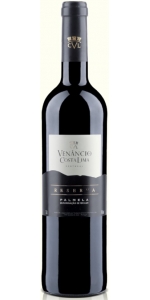Periquita

Periquita is a popular wine from Portugal that is a favorite among many wine experts. This variety from Southwestern Portugal was created by Jose Maria da Fonseca in 1850, and is also known as Castelão or João de Santarém. This wine is the most popular Portuguese red wine worldwide, and has been in production for over 150 years. The Periquita variety is typically found on the coast of Southern Portugal, but it grown all over the country. The name comes from a term in Portugese that means parakeet, but the name does not refer to the bird. The name is in reference to the Cova de Periquita vineyard where Jose Maria da Fonseca first planted the variety. The term Periquita is another name used for grape, Castelao. The variety produces young wine with harsh, strong tannins, but the tannins become softer as it ages, which gives the wine a nicer fig flavor. Periquita grapes grow well on sandy soils but can also easily adapt to other regions and conditions. The red wine grape is often used with other varieties, such as Tinta Negra Mole, which creates a lighter tasting wine. Periquita is still being produced today in the region.
Venancio da Costa Lima Palmela Reserva is made from 100% Castelao (also known as Periquita)
Intense garnet color, complex nose with touches of ripe fruit, jam and spices, full-bodied flavor and a very balanced finish.
100% Castelao (also known as "Periquita" and "Joao de Santarem". As the most widely-grown red grape variety in Portugal it is still often referred to in Portuguese as Periquita, although that name is legally owned by José Maria da Fonseca in the Setúbal Peninsula outside of Lisbon. It is highly adaptable to different climatic conditions and its remarkable versatility enables winemakers to make a range of wines – from the easy drinking and quaffable reds and rosados to the powerful and intense reds perfectly suited to lengthy cellaring. Castelão comes into its own and is most expressive in the Sétubal Peninsula, where it makes meaty and intense wines with aromas of red berries and blue flowers that marry well with the deft use of oak.
Made from 45 year old vines.
Classic vinification at controlled temperature (25 °C) with prolonged maceration for phenolic extraction. Wine went through malolactic fermentation.
Wine was slightly fitered before bottling to avoid sedimentation in the bottle and to ensure stability.
Pasta, Cheese, red meat and game.
- back
Selected Options
Grape Types
Categories
Pricing
Countries
Regions
Grape Types
Wineries
Organic/Free Shipping
All older vintage wines have been purchased from a single collectors cellar. Pictures can be requested before shipment.
Argot Indigo Syrah is made from 100 percent Syrah.
The color of exaltation, opulence and elusiveness. The Indigo pigment has held sway over the heads and hearts of humans for centuries. Each vintage we honor this legacy by creating a Syrah which captures the might, richness and intrigue of the ‘Indigo’ legend. Profound, captivating and endlessly intriguing. Delicious.
Review:
The single-varietal 2021 Indigo Syrah is deep garnet-purple in color. Notes of plum preserves, fruitcake, and licorice jump from the glass, with nuances of rose oil, cardamom, and cumin seed. The full-bodied palate is concentrated and plush, with bright acidity to balance and a long spicy finish.
-Wine Palate 96 Points





